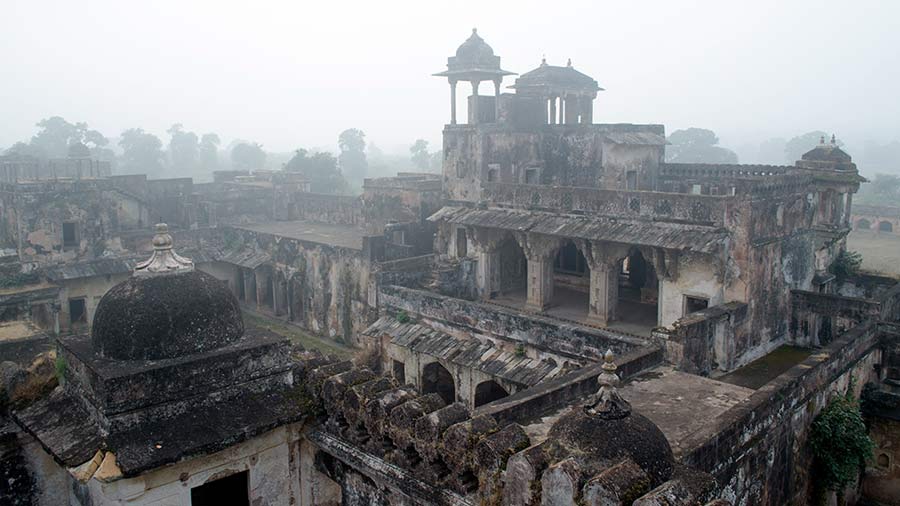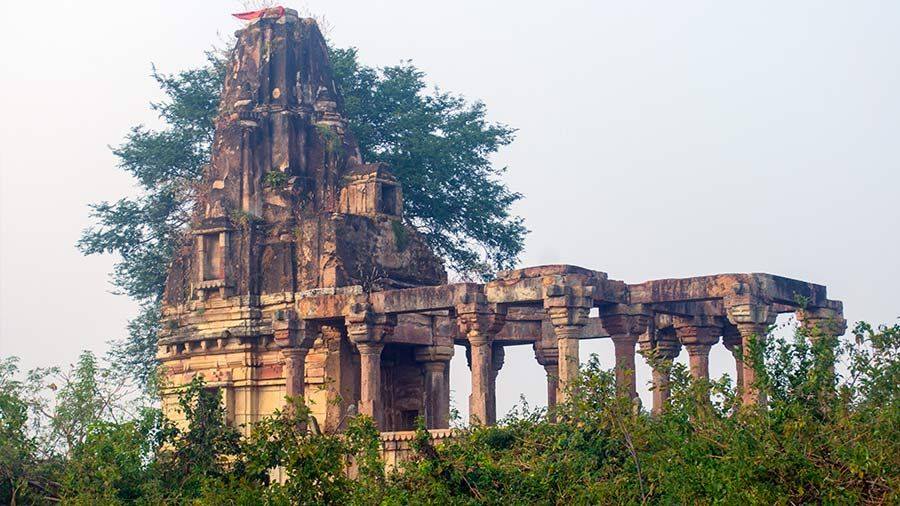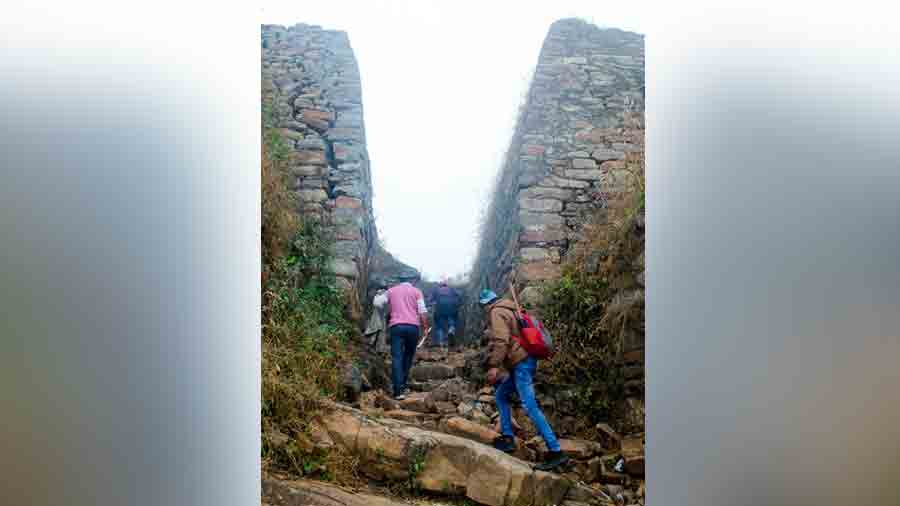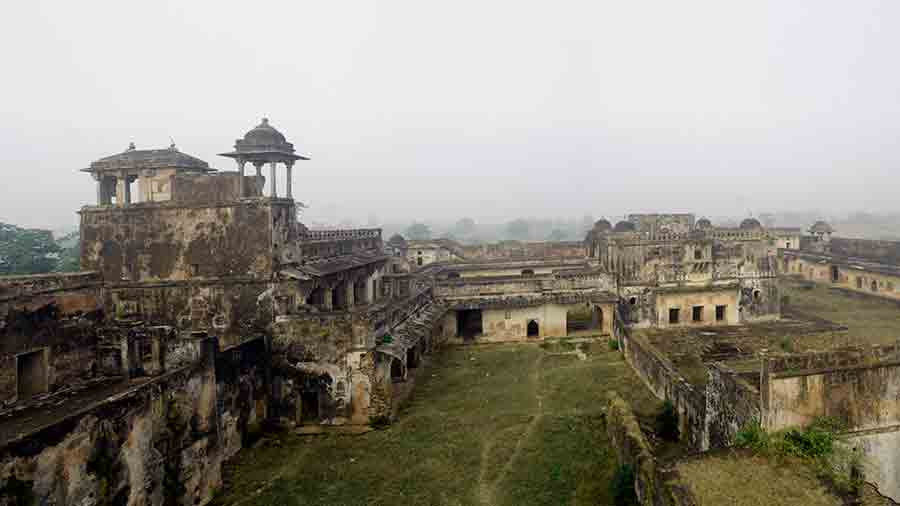Located atop the tall cliffs of Kaimur Hill in Rohtas, Bihar, and towering above the meandering Son River, lies the mighty Rohtasgarh or Rohtas Fort. Located on a plateau at a height of about 1,500 feet, it provides a bird’s-eye view not only of the surrounding area, but historically, also of advancing armies. The fort was built by several dynasties, spanning a period of several centuries, and has a history full of myth and legend.
Pre and ancient history

Bastions, domes and turrets of the fort
According to legend, the fort was built by Rohitaswa, son of the legendary King Harishchandra. Some historians opine that the initial phase of the fort was constructed by local tribes like Kharwars and Oraons. The fort passed through several Hindu dynasties and it is believed that it was under the Brahmin king, Chandra Ban, in the mid-16th century.
Medieval period
Sher Shah Suri took over the fort from Chandra Ban in 1539, and it is from here the recorded history of the fort is available. A year later, Sher Shah took control of the throne of Delhi and made several extensions in the Rohtasgarh Fort, which included the addition of the Jami Masjid in 1543. After the fall of the Suris, Akbar’s trusted general, Raja Man Singh, took control of the fort. Man Singh extended the fortification of the fort and build a huge palace complex that stands to this day.

The entrance of the Man Singh Complex
The British period
In 1863, the puppet Nawab of Bengal, Mir Qasim, escaped the British and took shelter in the fort, but was soon captured. The British took control over the fort and left soon after. But their short stay was marked by the demolition of several structures of the fort. During the revolt of 1857, a group of mutineers took refuge in the fort. The British wanted to recapture the fort, but the mutineers were able to drive them away several times. Finally, the British emerged victorious and Rohtasgarh was captured, and soon abandoned. Later, the fort served as a hide-out for local dacoits, and finally in the 1980s, it served as a Maoist stronghold.

The Diwan-i-khas
Rohtasgarh Fort now
In 2012, the Maoists were driven out and Rohtasgarh finally emerged as a tourism prospect. But sadly, in the last decade, nothing much has happened.
Today the fort is best approached from the western gate. Cars reach the western gate and a flight of stairs lead to the Man Singh Complex, the most preserved part of the fort. The complex is entered through the Elephant Gate and contains the Diwan-i-khas, Rani Mahal and Raja Mahal, all inter-connected by a complex maze of elevated walkways. A little away from the Man Singh Complex is the Ganesh Temple. The front portion of the temple has collapsed, but the section housing the idols remains intact.

The remains of the Ganesh Temple
More adventurous visitors can opt for a north-south traverse of the fort complex, which has a 45km circumference. The trek leads to the Ghora (horse) Gate on the south and past the Rohtasgarh Devi Mandir and Shiva Temple. It leads to the Man Singh Complex. Beyond that, the trail meanders past the Ganesh Temple and past several ruined structures and bastions, leading to the Shahi (Royal) Gate on the south. The seven-hour trek has its share of adventure and a guide from the nearby village is an absolute necessity.

A trek of the grounds requires a guide
Travel details
- Dehri-on-Sone is the nearest railhead, but it is advisable to stay in Sasaram as it has better accommodation
- Sasaram takes about eight hours from Howrah. A night journey is recommended as it saves time
- Staying at Sasaram also provides the opportunity of visiting the tombs of Sher Shah Suri and Hassan Shah
- Sasaram has basic hotels near the station
- Hotels can arrange for cars for the Rohtasgarh trip. The driver doubles up as a guide. For a trek across the fort, the driver can arrange for a local guide
Rangan Datta is a mathematics and management teacher by profession and a travel writer and photographer by passion. He has been addicted to discovering off-beat places since his undergraduate days at St. Xavier’s College. Blogging and contributing to Wikipedia are his other passions.
